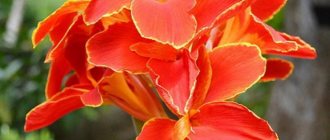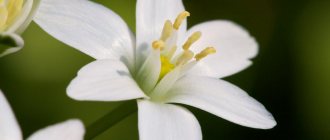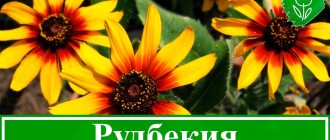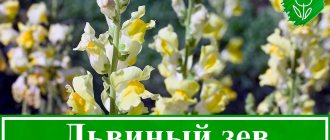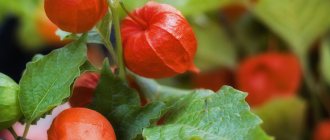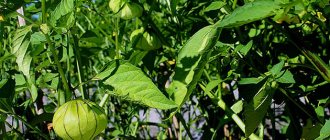Summer... The long-awaited time. Greens, flowers, berries. Rainbow of feelings and moods. Summer flowers are for me the most beautiful miracle of nature. Bright, juicy, fragrant and aromatic. Large and small, big and small. Curly and creeping. High and low. These are the summer flowers.
Summer consists of colorful, sunny and warm days. Summer is rich in the fragrant aroma of flowers, delicate berries and good mood. I love summer time.
The longest and warmest days of the year. Bright evenings. Daylight prevails. Every day a different color and aroma.
You go out in the morning and can’t stop looking at the beauty of the flower carnival. Yesterday there was only a bud and suddenly a new flower bloomed.
Flowers in summer are like a rainbow. Every day a different color. Pink, red, blue, cyan, purple, orange, yellow. And how beautiful are the white-pink, yellow-green, multi-colored colors. Juicy and bright. In the garden, at the dacha, in the square and in the park.
Wild and forest summer flowers bring special joy and delight. There is so much joy, light, and inspiration in them!
The variety of flower shapes is so great that you can’t help but wonder what kind of creator came up with this beauty. Whisk and bell, openwork rims and flattened circles, fluffy and prickly. Ovals extended towards the sun and small peas of a summer flower.
Petals, pistils, stamens...
Chamomiles, bells, forget-me-nots, irises, carnations
. How many days will they live, how long will the buds open into the beauty of a flower and make the bees happy? How many days will I, waking up in the morning, rush to say hello to my favorite summer flowers? White and blue bells will nod their heads to me in the light breeze, daisies will swirl their petals. Irises stand proudly on a solid stem and lure my gaze with the bloom of a flower.
In summer, the flowers bloom in order. The first to bloom are spring primroses, tulips, daffodils, bird cherry flowers and apple trees. Lilac smells fragrant. And then comes the carnival of summer flowers.
Bees are buzzing and collecting nectar.
Peonies
Peonies
herbaceous perennials with lush foliage and showy flowers. Flowers of tenderness and passion.
The aromas of peonies make your head spin. Their flowers are large, of different colors and shapes. Pink, crimson, white with fringed petals. Peonies have large buds. There are open ones with a middle. Some varieties are folded into an oval. And the smells... The aroma after rain and with dew is intoxicating! Favorite flowers of summer.
Perennials
Of the perennials, the most long-flowering ones are lily , gaillardia , foxglove , cornflower , phlox paniculata , as well as geranium (pelargonium), which is grown as a home and outdoor plant.
Gaillardia
A beautiful, bright, drought-resistant flower of the Asteraceae family. Grows up to 50-80 cm tall. Leaves are lanceolate, pubescent. Inflorescences are simple, semi-double, terry baskets up to 10 cm in diameter. The color of the petals contains red-brown, yellow, orange, and carmine shades. The two- or three-color options are especially attractive: grandiflora “Arizona Sun”, “Goblin”, “Sundance Bicolor”, “Jasper”.
Gaillardia will decorate the dacha with its continuous flowering all summer, creating, like marigolds, a sunny mood even on a cloudy day
In winter, the plant is susceptible to freezing. Before the onset of stable frosts, gaillardia, especially young plantings, must be covered with a layer of mulch to protect it from the cold.
Foxglove (digitalis)
A tall ornamental plant (up to 150 cm) from the Norichinaceae family. It got its name because the corolla of the flower resembles a thimble. The flowers are large (3-4 cm), white, cream, yellow, pink, purple, carmine in color, often with dark spots inside, as in the photo. Foxglove is propagated by seeds in May - early June. In the year of planting, it forms a rosette of large pubescent leaves and blooms in the second year. The plant is light-loving and drought-resistant. Looks good in groups, in flower beds, rocky areas, and remains decorative for a long time after cutting.
Foxglove, despite its medicinal value, is poisonous - if there are small children in the family, it is better to hold off on planting this flower in your area
Common cornflower, popovnik
Nivyanik, belonging to the Asteraceae (Asteraceae) family. It is a rhizomatous perennial with a rosette of basal leaves and strong, weakly leafy shoots reaching up to 100 cm in height.
Common cornflower or popovnik is most often called garden or meadow daisy.
Inflorescences-baskets, formed by white reed flowers along the edge and yellow tubular flowers in the center, reach 5-15 cm in diameter. On the site, the cornflower should be given an open, sunny space with fertile soil. Partial shade is acceptable: the plant will bloom, but there is a risk of peduncles bending and lodging. Reproduction is possible by seeds, dividing the rhizome and cuttings of small basal rosettes with a “heel” - a piece of rhizome. Rapidly growing bushes are kept in one place for 3-4 years, then division and obligatory replanting are carried out, otherwise the rhizomes rot, the inflorescences become smaller, and the plants’ resistance to cold decreases. Tall daisies are good in flower beds, short ones - in rockeries. Nivyanik is also great for creating bouquets.
Of particular interest are hybrid varieties with double inflorescences, for example, “Crazy Daisy” (pictured)
When planting perennials in a permanent place, you should remember that they will grow there not for one year, but for 3-4, which means that at the stage of preparing the soil you should take care of its fertility: add rotted organic matter or ready-made mineral complexes. It is also necessary to fertilize several times a season with fertilizers with a predominance of potassium and phosphorus, which stimulate abundant and long-lasting flowering.
The last time the plants are fed is in July, so that by autumn they do not build up excess vegetative mass, but go to wintering prepared.
Rose
Individual odes to Rose. The rose is the queen and favorite among summer flowers. Curved flower petals, wavy shapes or jagged edges add unique shape and beauty.
And the smell... Subtle aroma of citrus, fruit and spicy flavors.
You can admire a rose and inhale its aromas for an infinitely long time.
The Queen of Flowers grows in gardens, parks, flower beds and colorful compositions.
Roses are beautiful and unique flowers with a variety of shapes, types and colors.
Perennial flowers decorating the dacha all summer
Phlox
Phlox is a herbaceous perennial, one of the most unpretentious, which is why it has become widespread in household plots. Erect stems with narrow leaves end in fragrant lush cone-shaped or pyramidal inflorescences. The rhizome has an above-ground part, which produces up to 5 renewal buds every year, so the bushes grow quickly. Phlox is undemanding to soil and moisture; it grows better in sunny places, but can easily tolerate shading.
Evening primrose
Evening primrose is a rhizomatous perennial up to 1 meter high. The stems are densely leafy and have stiff bristles along their entire length. The leathery leaves acquire a beautiful bronze hue closer to autumn. Fragrant flowers can reach a diameter of 7-8 cm. They have one peculiarity - they open in the evening, for which the plant has the second name “evening candle”. The flowers come in a wide variety of colors - yellowish, red, soft pink, sky blue. Grows well in light soils and does not like waterlogging. In the photo is the Missouri evening primrose:
Cornflowers
If you say the word “cornflower”, you instantly associate it with a modest, sky-blue field flower. But summer residents know how beautiful cornflowers look in flower beds. The great advantage of the plant is its abundant flowering and unpretentious care. And planting is a simple process. Today, the wildflower has migrated to our gardens and is represented by more than 100 varieties. The most popular types among flower growers are: white cornflower, mountain cornflower, meadow cornflower, pink cornflower, and “blue angel.” They all differ in flower shape, leaves, and height. But one thing remains the same - almost all types of cornflowers bloom all summer. Without making high demands, they will decorate any garden.
We recommend studying: a selection of unpretentious long-blooming perennial flowers for the garden with photos
Armeria seaside
Low-growing perennial - from 15 to 50 cm in height. Forms dense clumps - pads. From the basal rosette emerges a large number of thin, narrow leaves and a straight, pubescent stem, ending in a spherical inflorescence, which consists of small flowers, mostly white, pink or shades of red. It begins to bloom in May and until the end of September. To extend the Armeria growing season, you need to trim stems with faded flowers. It loves watering and therefore prefers to grow near bodies of water. Propagated by division and self-sowing. It is advisable to cover it for the winter.
Yarrow
An unpretentious rhizomatous plant. In contrast to its wild form, which has only white inflorescences, it may, depending on the variety, have a variety of colors. Small flowers are collected in large corymbose inflorescences. Stems up to 80 cm high are covered with narrow, hard leaves. Grows on any soil, drought-resistant, frost-resistant. In the photo is the yarrow “Pearl”:
Cuff
A very pretty low-growing perennial with a regular rounded bush shape. Not very large inflorescences of yellow and green shades have lacy edges framed by velvety carved leaves, painted bluish-green. It sets off other flowers in the flowerbed very nicely. It loves moist soil, so it needs to be watered more often.
Tradescantia garden
The plant has collected more than 90 different variations of perennials. Tradescantia can be either a low-growing bush (up to 10 cm) or a tall bush (above 1 m). Summer residents often plant the plant because of its attractive inflorescences and ease of care. Tradescantia differs from other flowering perennials in its flowering. The flowers bloom only for one single day and wither at night. But, so many buds are formed on the bush that the bush stands blooming all summer. Tradescantia prefers to be planted in the shade and in nutritious soil. For lush and abundant flowering, regular watering, fertilizing and pruning of faded flowers will be required. The plant reproduces on its own. It does not need shelter for the winter.
Astilbe
The height of shrubs of different varieties is from 40 cm to 2 meters. Openwork lush foliage and paniculate inflorescences of white, pinkish, red or purple shades prefer light shade, abundant watering and fertile soil. Propagated by dividing the bush into parts that have 2-3 renewal buds. The survival rate of these separated bushes is excellent, almost 100%. Astilbe is divided every 4-5 years, since during this time the bushes grow greatly. It blooms from late May - early June until the first ten days of August.
Violet thin
It is also graceful - a perennial up to 20 cm high. The leaves are heart-shaped and coarsely toothed. Flowers are yellow, blue-lilac or amethyst in color. The graceful violet blooms from spring until frost. For good flowering you need nutritious light soils. Can tolerate light shade. Looks very good in rock gardens.
Mallow
She is also a rose stock - a tall (up to 150 cm) perennial with smooth stems. Beautiful flowers up to 10 cm in diameter grow in the axils of large leaves. They can be simple or double, very similar to roses in full bloom. The plant is unpretentious, but grows better in sunny places. It looks especially impressive in groups that well mask unsightly places in the garden - walls, fences, sheds. It blooms all summer, is easy to care for, and is not afraid of drought and frost. There are varieties with densely planted flowers, behind which the stem is practically invisible.
Astrantia
Herbaceous rhizomatous plant. On straight shoots with few leaves, up to 1 m high, there are rarely unusually shaped leaves, as if wrapping the stem. It ends in a large inflorescence consisting of many small flowers. The plant is unpretentious to light and soil; minimal watering is required. Blooms from May until frost.
Dianthus perennial
A small bush with drooping stems covered with narrow lanceolate leaves. Carnation flowers are not very large, white, pink, lilac or red, collected in small inflorescences of up to 5 pieces. Has a strong spicy aroma. Blooms from early June to late September. An unpretentious, frost-resistant and drought-resistant plant. Does not like waterlogging.
Blood red geranium
Among several types of garden geraniums, this one is the most decorative. The bush has a regular round shape. During growth, the leaves are light green in color, and by autumn they acquire a red color, fully justifying their name. The stems and leaves are the same length, so only the flowers are visible above the leaves, which appear throughout the summer until the end of September (for the southern regions). Leaves remain on the plant even in winter, especially on old bushes. A perennial can be grown in one place for more than ten years. Geranium is a good helper in the garden; the smell of its leaves repels harmful insects.
alpine aster
Bushy perennial, 10-30 cm high. The optimal area for development and flowering will be partial shade. Planting requires nutritious soil with drainage. It blooms all summer, and the Rosea variety has the longest flowering.
Kentranthus
Aka red valerian. A rare plant in areas, but very interesting. The height is up to 1 m, the width grows to 50-60 cm. Numerous small pink-red flowers, very fragrant, grow on densely leafy stems, collected in large inflorescences in the form of a dome. Flowering continues from early June until autumn. Loves sunny places and fertile soil. Propagated by dividing the bush.
Heliopsis
Very similar to chamomile, only the flowers are yellow or orange, can be double, collected in panicle-shaped inflorescences. The stems are straight, reaching a height of one and a half meters, highly branched. Lush flowering continues until frost. Does not like heavy watering, grows well in the sun and on fertile soil.
Bell
Campanula is a low-growing plant, mainly used for decorating alpine slides. An unpretentious, frost-resistant flower loves slightly moist soil. Flowers of white, blue, purple and bluish colors can be single on the stem or collected in inflorescences in the form of a brush, depending on the variety. The stems have sparse narrow leaves. Grows well in partial shade. Propagated by seeds or dividing the bush.
Oak sage
It harmoniously combines high decorative and useful properties, being a good honey plant. Stems up to 80-90 cm high rise from a dense rosette of elongated, fairly large leaves. The spike-shaped inflorescence consists of small blue flowers - fragrant, well attracted to bees. Can grow in partial shade on loose, well-fertilized soils. Does not like waterlogging and is not afraid of cold weather. But it is still advisable to make a light cover in harsh winters.
Pansies
There are annuals, biennials and perennials. Perennial pansies are often called garden violas. Perennial pansies are often grown in summer cottages because they are easy to care for. It is best to plant in sunny areas, and preferably in damp places. For abundant flowering, fertile soil is needed. Then the pansies bloom all summer. The flowers are small, only 1.5-2 cm in diameter. There are a lot of colors, which allows you to make a flowerbed from only pansies. It is important to promptly remove faded flowers to prolong flowering. During the winter months, flowers do not need shelter.
Dianthus
Low-growing perennial, blooming for 45-50 days. During flowering, the entire bush is covered with small purple or deep pink flowers. The plant is beautiful in solitaire and group plantings. The grass is not demanding in terms of care, but it is better to plant it on fertile soils.
Monarda
The plant is a fragrant perennial. Single or spike-shaped inflorescences are painted in pink, lilac, purple, lilac tones. Moranda is planted on light and nutritious soils, the place should be protected from gusts of wind. Moranda is planted in group plantings with the same fragrant perennials or annuals.
The fragrant flower grows up to one meter, so it is planted as a background or as a tapeworm. Lemon monarda is often found in dachas. Moranda blooms from mid-July until the onset of the first frost. Green leaves accumulate essential oils during the flowering period. In the photo there is lemon monarda:Aquilegia
Decorative leaves of aquilegia begin to rise from the ground after tulips and daffodils bloom. Aquilegia is one of the most unpretentious species of flowering perennials. Bizarrely shaped bells open on tall flower-bearing arrows. Aquilegia blooms almost continuously from mid-May until September. The plant is beautiful even after flowering, because with the arrival of autumn the leaves turn lilac or purple.
Depending on the variety, flowers grow from 30 to 75 cm. Aquilegia is planted both in the shade and in sunny areas. The plant has increased requirements for soil moisture. But, its ease of care is due to its powerful roots. Even when there is no moisture, the roots of aquilegia look for it. Flowering begins in the second year after planting. Mature bushes can be divided; they take root well in a new place.
Begonia everblooming
These flowers rightfully take first place among perennials for flower beds that bloom all summer. Plantings of ever-blooming begonias decorate flower beds with colorful lush inflorescences from late May to late autumn. And if you move begonia indoors for the winter, it can bloom all year round.
Not only the inflorescences of the plant are beautiful, but also the leaves. They also have different shapes and colors. Based on the color of the foliage, hybrids with green and bronze leaves are distinguished. Low-growing begonias do not grow above 25 cm. For such long flowering, begonias need soils that are saturated with humus and have a slightly acidic reaction. Watering is also important, but excess moisture can cause rotting of the root system. Today there are more than 600 hybrid varieties of ever-flowering begonia.
Lupine
These beautiful inflorescences, which have a huge variety of colors, decorate the garden and summer cottage all summer months. There are flowers on spike-shaped inflorescences not only of one color, but also of two. The plants are among the most unpretentious perennial flowers. Lupines begin to bloom in early June, and with the arrival of August, flowering repeats.
Lupines are tall and handsome, their height reaches one meter. Lupines are so unpretentious that they do not need nutritious soil. On the contrary, they are planted on poor soils. In conditions of lack of moisture, the plant will not die, because the powerful root system is capable of finding water and saturating the lupine bush. Planted in the last rows of flower beds. Lupines are ideal neighbors for aquilegia, poppies and nivyak.
Height distribution: important points for proper planning
In most cases, tall flowers are planted separately in accordance with the landscape design. They look great near buildings, against a fence or as a hedge.
To create an organized flower garden, such plants are used in limited quantities. They will become an excellent background (if the flowerbed is adjacent to the building) or will attract attention if the site is located separately.
Tall plants are placed in such a way that they do not obscure the light from the rest of the composition, and also so that they do not interfere with the view of the whole ensemble. Long flowering options are preferred. Tall stems (from 50 cm to 2 m) with large single flowers, lush inflorescences or panicles will give the flowerbed a festive accent.
Medium-sized options will create the impression of a smooth transition from tall to short plants. It is recommended to select varieties with long flowering. By promptly removing wilted buds, you will be able to maintain harmony in the flowerbed. Unpretentious flowers will be the right solution.
Low-growing residents are always located near the borders of the flower garden. Depending on the owner’s preferences, they can occupy up to 2/3 of the entire area. “Lilliputians” are most often placed in rows depending on the color of the corollas.
A schematic arrangement is also possible (if the flowerbed layout has a complex structure). In some cases, gardeners deliberately mix seeds when planting. This way, you can achieve unique diversity.
In addition to connecting the plants in a flowerbed by height, do not forget about the compatibility of other important conditions (relationship to light, moisture, soil type).
Types of plants for the garden that bloom all summer
For planting in flower beds, many choose perennials that bloom all summer, annuals, conifers, and ornamental bushes. Each individual plant type has its own advantages and disadvantages.
What is better to choose: annual or perennial flowers
When choosing between annuals and perennials, it is worth considering that the first group belongs to the one that needs to be sown annually (but this option makes it possible to change the appearance of the flower garden every summer), the second group only needs proper and competent care (most species are able to grow in flower beds without transplants for a long time).
Chamomile
It is up to gardeners to decide which option to choose. If you have free time to sow plants every year, and you want your flowerbed to play with new bright colors every year, give preference to annuals. If the main goal is to create a practical, beautiful and low-maintenance flower bed, on which you will not need to spend a lot of free time, it is better to choose perennial plants.
Attention : perennials are characterized by long and abundant flowering, and require virtually no care.

